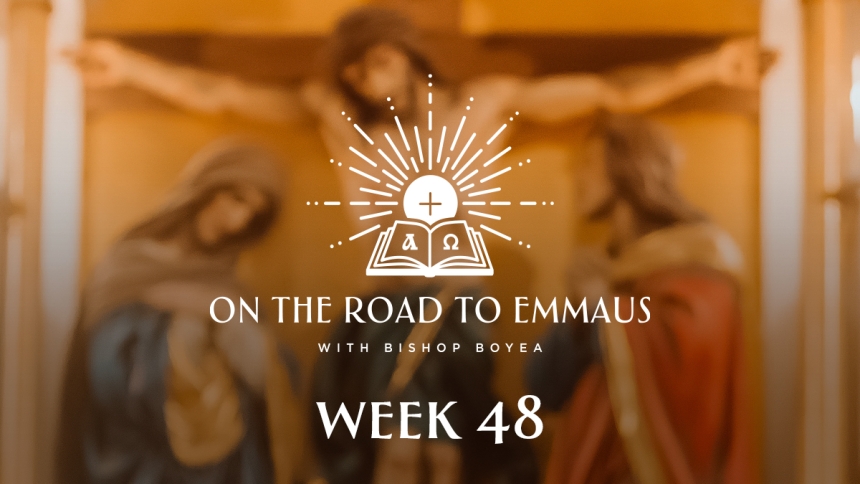
May 10, 2024
Feast of Saint Damien of Moloka’i
Dear brothers and sisters in Christ,
We are really into communion symbolism now. Just after sharing the Sign of Peace with one another, the priest breaks the host and drops a piece into the chalice. What is going on here? Let’s find out together On the Road to Emmaus.
The dropping of a fragment of the sacred host into the chalice is yet another expression of communion. First of all, the actual breaking of the bread, what is called the Fractio, was really just a very practical action of dividing up the consecrated bread for the purpose of distribution to those attending the Mass. It wasn’t until about the 900's that small individual hosts were produced that made the big ceremony of breaking the bread unnecessary. So, now this action became more a symbolic one.
Just as Jesus broke the bread and gave it to his disciples, so the priest continued this practice in a symbolic way (Mark 14:22). One of the most significant documents of the early Church is called the Didache (9:4). It has this beautiful line about the origins of the bread we use at Mass: “Even as this broken bread was scattered over the hills, and was gathered together and became one, so let your Church be gathered together from the ends of the earth into your kingdom.” That bread which was once many grains has become one body as Saint Paul tells us (I Corinthians 10:17): “Because the loaf of bread is one, we, though many, are one body, for we all partake of the one loaf.”
This one loaf is broken for us and is a symbol of our union with one another, both in its origins and in its distribution. That Eucharist came from us and now comes back to us to create and nourish our unity as communion.
But why the small piece into the chalice? Apparently, in the early Church the bishop would send a piece of his communion to his local priests to represent their unity as the local Church and then the priests would place that piece into the chalice. It seems that Saint Irenaeus, around the year 190 AD, was urging various parties disputing about the date of Easter to get along. He recalled a time in the past when priests on both sides of this argument still sent a piece of the Eucharist (the Fermentum) to each other.
Irenaeus also looked at the early example of Saint Polycarp and Pope Anicetus in the mid-2nd century: “And when the blessed Polycarp was at Rome in the time of Anicetus and they disagreed a little about certain other things, they immediately made peace with one another, not caring to quarrel over this matter…. But though matters were in this shape, they communed together, and Anicetus conceded the administration of the eucharist [Fermentum] in the church to Polycarp, manifestly as a mark of respect. And they parted from each other in peace, both those who observed, and those who did not [the common date of Easter], maintaining the peace of the whole church (Eusebius, Church History, 5.24).
Obviously, this practice did not last up to our day, but the mingling of a piece of the host into the chalice did. While it no longer was a concrete sign of the union of the local Church, it still could be seen as a sign of unity both of the entire Church itself and of the Sacrament of the Body and Blood of Christ. Unity, as a manifestation of communion, comes in many forms.
And so, to this week’s challenge: Let’s attempt to receive Jesus Christ in Holy Communion in a worthy manner and always in a state of grace. How can we do that? And why? To explain, let me introduce you to the Diocese of Lansing’s Director of the Office of Worship, Jeremy Priest.
+ Earl Boyea
Bishop of Lansing
